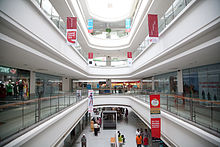| Name | Occupation |
|---|
| Yash Chopra | Producer/Director [45] |
| Anurag Singh (director) | Director, Producer, Writer |
| Diljit Dosanjh | Actor, Singer |
| Karambir Singh | 24th Chief of Naval Staff of Indian Navy |
| Ranbir Singh Kanwar | Sugarcane Researcher, Director of Research (Agriculture) PAU, Director of Research Himachal Pradesh Agricultural University [46] |
| Lawrence Durrell | Expatriate British novelist, poet, dramatist, and travel writer [47] |
| Vanya Mishra | Winner of Miss India Femina 2012 |
| Sunil Dutt | Actor [48] |
| Kundan Lal Saigal | Actor/Singer [49] |
| Amrish Puri | Actor [50] |
| Jazzy B | Singer |
| Sukhwinder Panchhi | Singer |
| Apache Indian | Singer |
| Sarbjit Cheema | Singer |
| Kanth Kaler | Singer |
| Karan Mehra | Actor |
| Nooran Sisters | Singers |
| Master Saleem | Singer |
| Hans Raj Hans | Singer |
| Jagjit Singh | Singer |
| Bahadur Singh | Indian former shot putter who won gold medal |
| General Muhammad Zia-ul-Haq | Chief of Army Staff, fourth Chief Martial Law Administrator and the sixth President of Pakistan |
| Diwan Bhai Abdul Hamid | Revenue and Chief Minister of Kapurthala State |
| Hafeez Jullundhri | Writer and poet |
| Baba Kashmira Singh | Head of Sidhant Sant Samaj or Gurbani |
| Paul Nischal | NRI President, first Indian candidate for the British Political Party |
| Col. Balbir Singh Kular | Hockey Player |
| Varinder Singh Ghuman | Bodybuilder, Wrestler and Punjabi Film Actor |
| Ajit Pal Singh | Hockey Player |
| Pargat Singh | Hockey Player |
| Inder Kumar Gujral | Former Prime Minister of India |
| Harbhajan Singh | Cricketer |
| Wasim Sajjad | Two-time Acting President of Pakistan, Ex-Chairman of Senate |
| Sheikh Anwarul Haq | Former Chief Justice |
| Mian Mohammed Sharif | Surveyor General |
| Lala Amarnath | Cricketer |
| Sushil Kohli | Swimmer |
| Lala Jagat Narain | Freedom fighter and founder of Punjab Kesri |
| Lahori Ram Balley | Ambedkarite [51] |
| Basheer Hussain Najafi | One of the six Grand Ayatollahs |
| Taruwar Kohli | Cricketer |
| Swaran Singh | Politician |
| Udham Singh (field hockey) | Hockey Player |
| Avneet Kaur | Actress |
| Darshan Singh (field hockey) | Hockey Player |
| Salma Mumtaz | Actress |
| Saurav Mandal | Football player |
| Ashwini Kumar Chopra | Journalist, Politician (MP-Karnal) |
| Kartar Singh Duggal | Writer |
| Kulwant Singh Virk | Writer |
| Ishar Singh (poet) | Poet |
| Sadhu Singh Hamdard | Freedom fighter and Writer |
| Prem Parkash | Writer |
| Ajit Saini | Writer and Army General |
| Hasrat | Writer |
| Gurbachan Singh Talib | Writer |
| Gurdial Singh | Writer and novelist |
| Chaudhry Muhammad Ali | Former Prime Minister of Pakistan |
| Swami Shraddhanand | Indian educationist and an Arya Samaj missionary |
| Wazir Ali | Cricketer |
| R. Paul Dhillon | Indo-Canadian journalist |
| Arun Shourie | Politician, author, and journalist |
| Amanjot Singh | Social Worker |
| Agha Sadiq | Writer and poet |
| Fateh Ali Khan | Singer. Father of Nusrat Fateh Ali Khan |
| Dharam Singh Uppal | Athlete |
| Balbir Singh Sr. | Hockey Player |
| Mandeep Singh | Cricketer |
| Vimi | Actress |
| Ranvir Shorey | Actor |
| Sugandha Mishra | Singer, Anchor, Comedian |
| Nalini Priyadarshni | Poet, Writer |
| Vijay Sampla | State Minister in Union Govt |
| Bhagat Chunni Lal | Minister in Punjab Govt |
| Ram Kapoor | Indian Actor |
| Buta Singh | Ex-Home Minister of India |
| Sukhbir Singh | Punjabi Musician, Singer |
| Amarjit Kaypee | Former highest run scorer in Ranji Trophy (Cricket) |
| Akshaye Khanna | Indian Actor |
| Surbhi Jyoti | Indian Actress |
| Jyotica Tangri | Playback singer, appeared in several reality TV shows |
| Lord Wilberforce | British Judge |
| Jass Manak | Singer |
| Manpreet Singh | Hockey Player |
| Garry Sandhu | Singer |
| Akhil | Singer |
| Jasmine Sandlas | Singer |
| Iqbal Preet Singh Sahota | Former DGP and State Police Chief of Punjab |
| Mohinder Singh Kaypee | Former Member Parliament and Cabinet Minister |
| Santokh Singh Chaudhary | Former Member Parliament |
| Darshan Singh Kaypee | Former Cabinet Minister who was shot dead by Khalistani terrorists |
| Som Parkash | Former Union Minister, Government of India |
| Jagjit Singh (politician) | Former Cabinet Minister, Punjab |
| Sarwan Singh Phillaur | Former Cabinet Minister of Punjab |
| Avinash Chander | Former Member of Legislative Assembly, Punjab |
| Rajinder Johar | Philanthropist with quadriplegia |
| Rachel Gupta | Model and Miss Grand International 2024 |





























